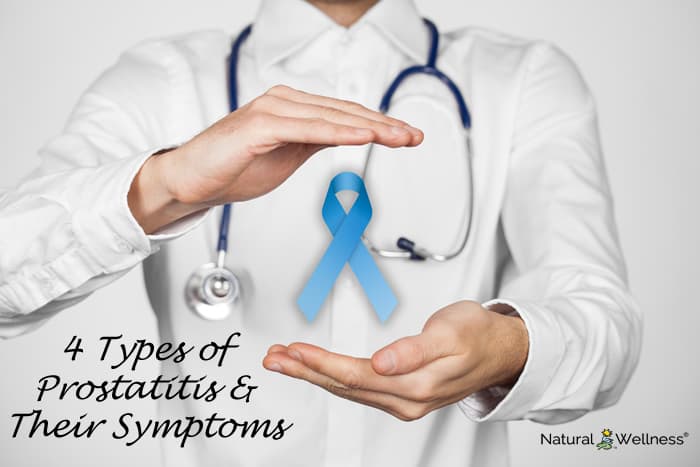

The prostate is a walnut-shaped gland in men which surrounds the urethra at the site of the neck of the bladder. The neck of the bladder is where the urethra joins to the bladder – through which urine leaves the body. Because of this proximity, inflammation of the prostate – prostatitis – can cause urinary as well as fertility problems in men.
Over two million doctor visits per year result from prostatitis and researchers believe many cases go untreated. A similar condition, benign prostatic hyperplasia (BPH), is the enlargement of the prostate – usually as a natural part of aging – and can also cause urinary symptoms.
4 Types of Prostatitis
Scientists have identified four types of prostatitis:
- chronic prostatitis (chronic pelvic pain syndrome)
- acute bacterial prostatitis
- chronic bacterial prostatitis
- asymptomatic inflammatory prostatitis
Chronic prostatitis is often a result of nerve damage in the lower urinary tract due to trauma. Men over age 50 are more likely to develop chronic prostatitis conditions, and they can be exacerbated by stress. Acute or chronic bacterial prostatitis both result from bacterial urinary tract infections (UTI) in men of any age; however men over age 50 tend to contract UTIs more often.
Symptoms of Prostatitis
Symptoms of chronic prostatitis (chronic pelvic pain syndrome) include pain or discomfort lasting over three months in the following areas:
- between the scrotum and anus
- central lower abdomen
- penis
- scrotum
- lower back
Symptoms of bacterial prostatitis include:
- frequent urination and urgency
- fever
- chills
- a burning feeling during urination
- pain in genital or groin area or lower abdomen and lower back
- nausea and vomiting
- body aches
Only about 5-10% of prostatitis cases are bacterial.
Other symptoms of prostatitis include:
- pain in urethra or penis during or after urination
- the need to urinate eight or more times per day
- urinary urgency
- the inability to delay urination
- difficulty initiating a urine stream
- a weak or interrupted urine stream
Painful ejaculation can also be a sign of prostatitis.
Men with signs and symptoms of prostatitis should visit their urologist to determine if they have prostatitis, which type of prostatitis they may have, and to determine treatment.
Saw Palmetto, Zinc and Vitamin D
Traditionally, the herb saw palmetto has been used for the treatment of prostatitis symptoms. Saw palmetto is high in beta-sitosterols and boron, both of which have been shown to improve urinary symptoms and urinary flow. Zinc has also been shown to aid in managing the symptoms of prostatitis as it has antibacterial and immune-modulatory functions in the body.
Vitamin D has also been shown to inhibit the activity of intra-prostatic growth factors and arrest prostate growth in BPH patients.
All men, but especially those over age 50, should know the signs and symptoms of prostatitis and be proactive in maintaining their prostate health.




